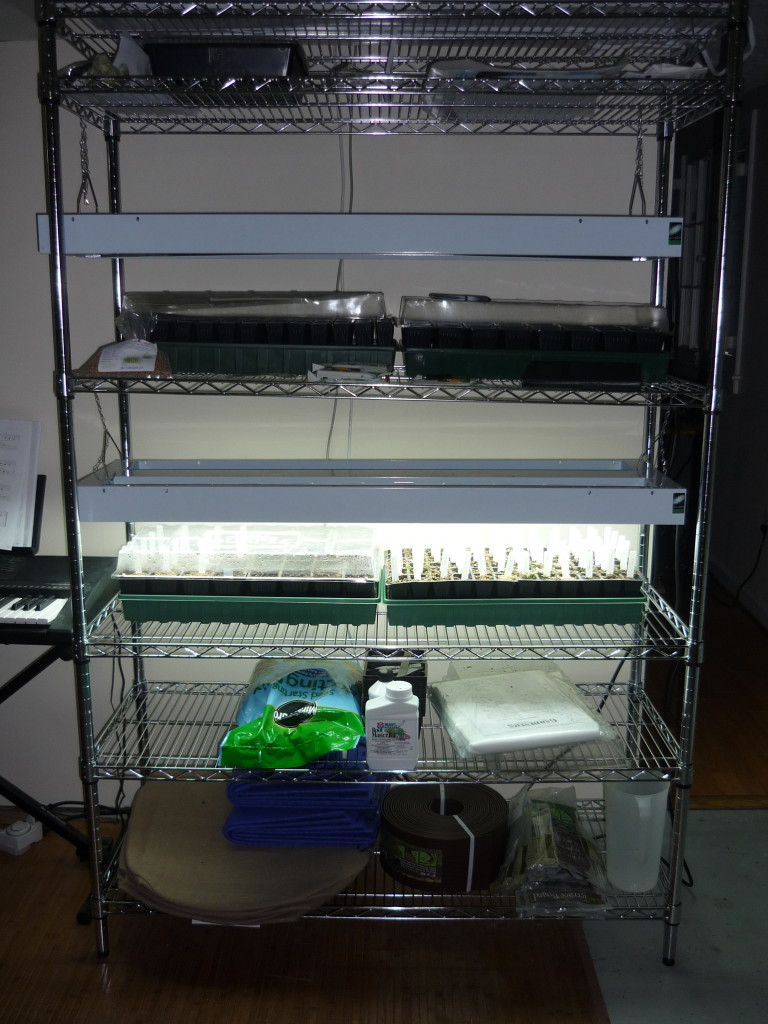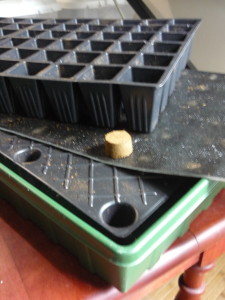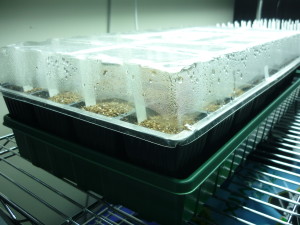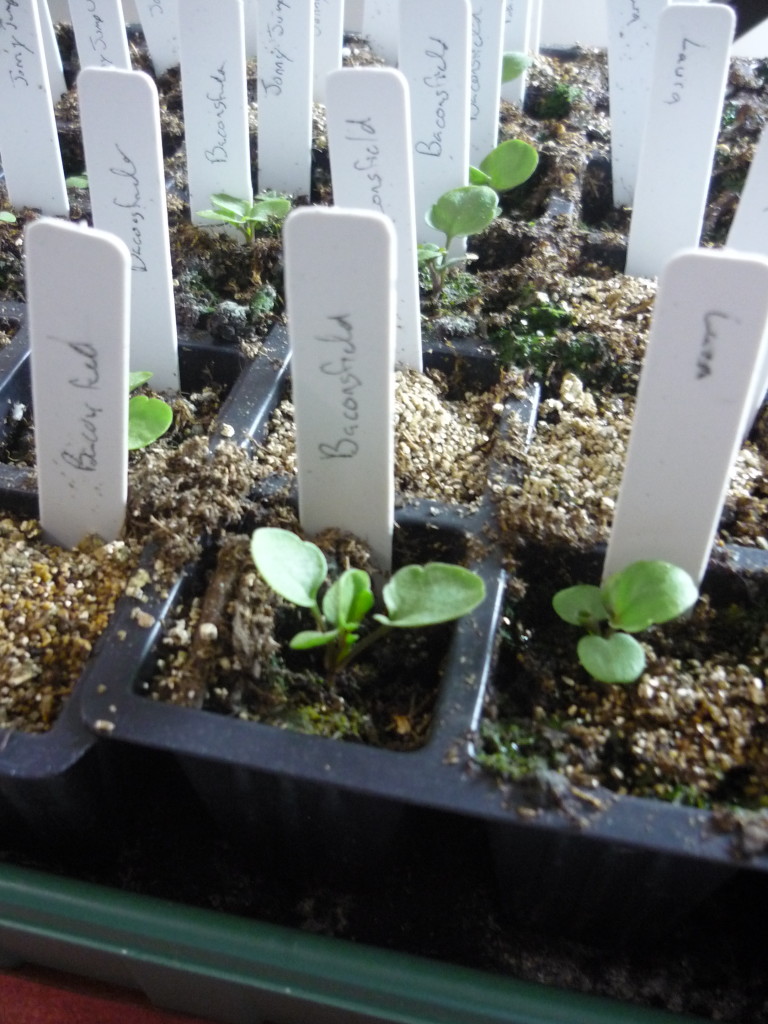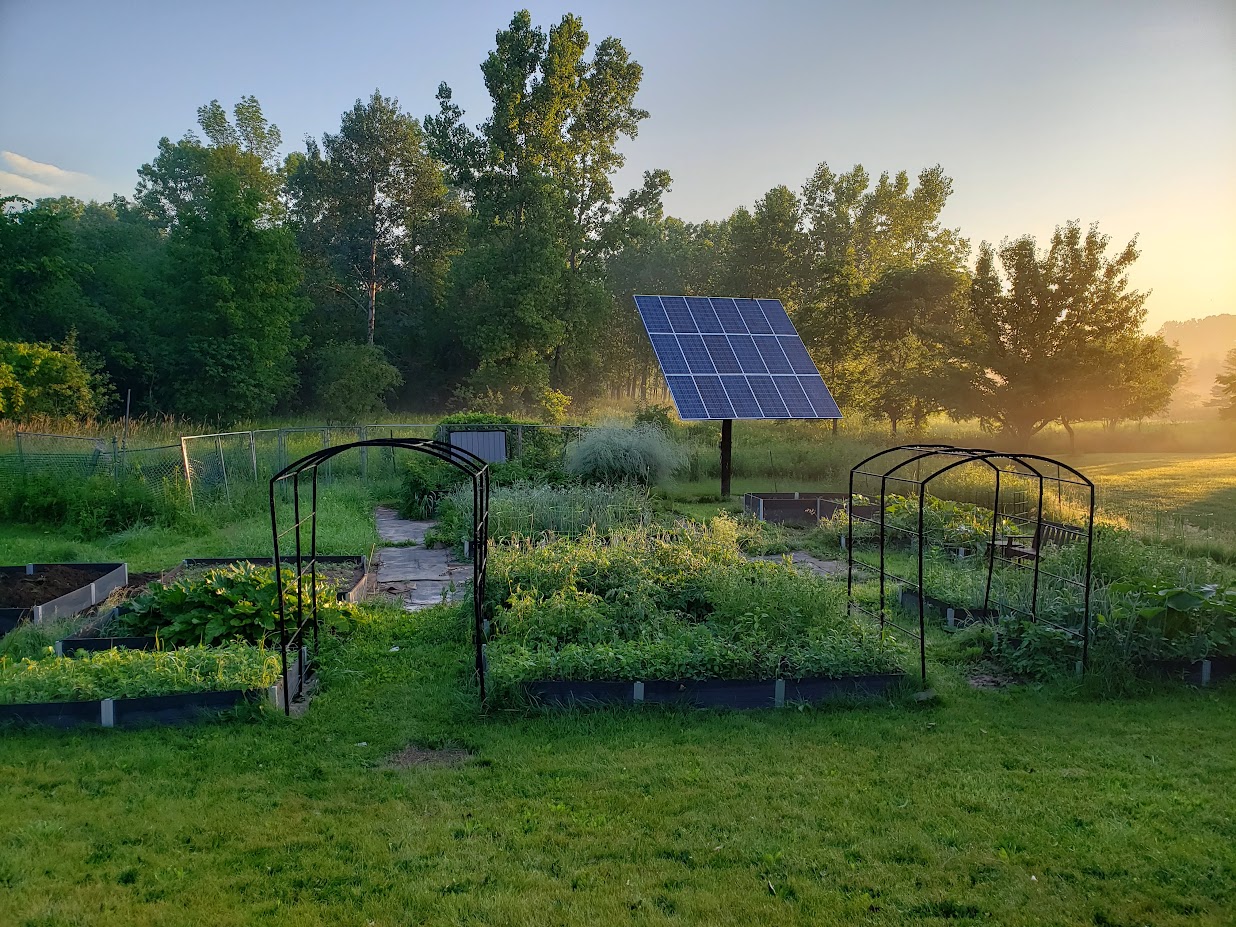The last couple of years by the time October (and our first freeze) rolls around, my garden has grown into a giant jungle worthy of Jurassic Park that tries to eat me as I fight my way in to get the last tomatoes/peppers/lettuce and I’m secretly almost glad to see it go to sleep as the weather gets cold. Now, this may have something to do with the fact that I have a full time engineering job and have been taking grad school engineering classes in my free time…in addition to all the other life stuff that’s been going on. But that’s been my fall experience the past few years. (Note, the flowers are the exception, I always miss those. I refused to pull up my flower bed until they were entirely gone and P. had made a couple of concerned comments about the look of the front yard…)
Still, when the seed catalogs come out at the end of December I’m very much ready to have plants again. I’ve never been very good at houseplants, and winter is always extra hard to keep up with watering, so I really miss my garden during the winter. As I learned last year though, no matter how much I want plants starting seeds super early ends badly. And by ends badly I mean ends up with buying a card table and window boxes for the dozens of extra celery seedlings that were definitely big enough to be planted out by Valentine’s Day… So this year instead of planting everything at the earliest possible date and growing as many different types of plants as possible, I’ve tried to carefully think out what would be best to grow and what would be the optimal time to plant my seeds.
So February ended up being when I could start planting. The first batch of seeds has been all flowers because they grow more slowly and fit in the six-packs much better and longer than the vegetables, also some of them can be planted out before the last average frost date. So I got to start my first violas, pansies and impatiens right at the start of February.
This is my seed growing set up in the basement. I have my own shelf this year. Last year my plants were sharing space with the pantry goods which was a challenge for everyone. The shelf is the basic wire shelf for Home Depot, and it’s 4 ft long and wide enough for the lights to fit between the vertical supports. I got proper EnviroGro lights with four T5 bulbs in each light. Last year I got two bulb lights by Lithonia from Home Depot that cost almost as much but they didn’t provide enough light and one of them promptly broke. The new ones are much sturdier and provide plenty of light. They’re also plugged into an outlet timer to keep the plants on a proper day/night cycle. I’ve found that the T5 bulbs don’t make a noticeable difference in our electric bill so it’s definitely worth going for the nicer lights to be able to use those. The other advantage of this set up is that I can adjust the height of the shelves to give plenty of room to raise and lower my lights as the plants get bigger.
I’m also using the seedling trays from Burpee. I like them because the capillary mats (the black mat in the picture) does a much better job of watering appropriately than I do on my own. The best part is you can reuse them by washing them at the end of the season with a very diluted water/bleach solution to sterilize them. Sterilization is important to prevent damping off and other problems. I now have four sets, two regular (72 count) and two XL (32 count). For the most part the larger ones will be for the vegetable plants and the smaller ones for the flowers. They also come with covers so they can function as greenhouses when the seeds are first planted. You just have to remember to take off the lid as soon as seeds start to sprout.
I’ve also been very careful to label each plant. Last year I thought just making a diagram would be enough, but I forgot that once I picked up my six-packs to move them outside I would no longer know which tomatoes were on which side…
So far I’ve planted the flowers I listed earlier, broccoli, habanero peppers and Pow Wow White Enchinacea flowers. The last flowers are perennials which should get pretty big and have awesome white daisy-like flowers all summer. I’m hoping it will be a nice low cost way to fill in some of the gaps in the slightly neglected landscaping in the house we rent. The hard part now is waiting to plant the rest… Next week will be the rest of peppers, and the tomatoes the week after that, and lettuce and marigolds the week after that (I’m getting a head start on the lettuce), and herbs the week after that, and last the zinnias the week after that.
It’s tempting to plant them all now because planting them is fun and it’s exciting to see them grow… But as I learned last year, this is a bad idea. So! As usually, making things is an exercise in awesomeness and patience.
